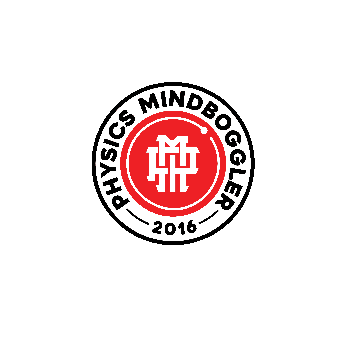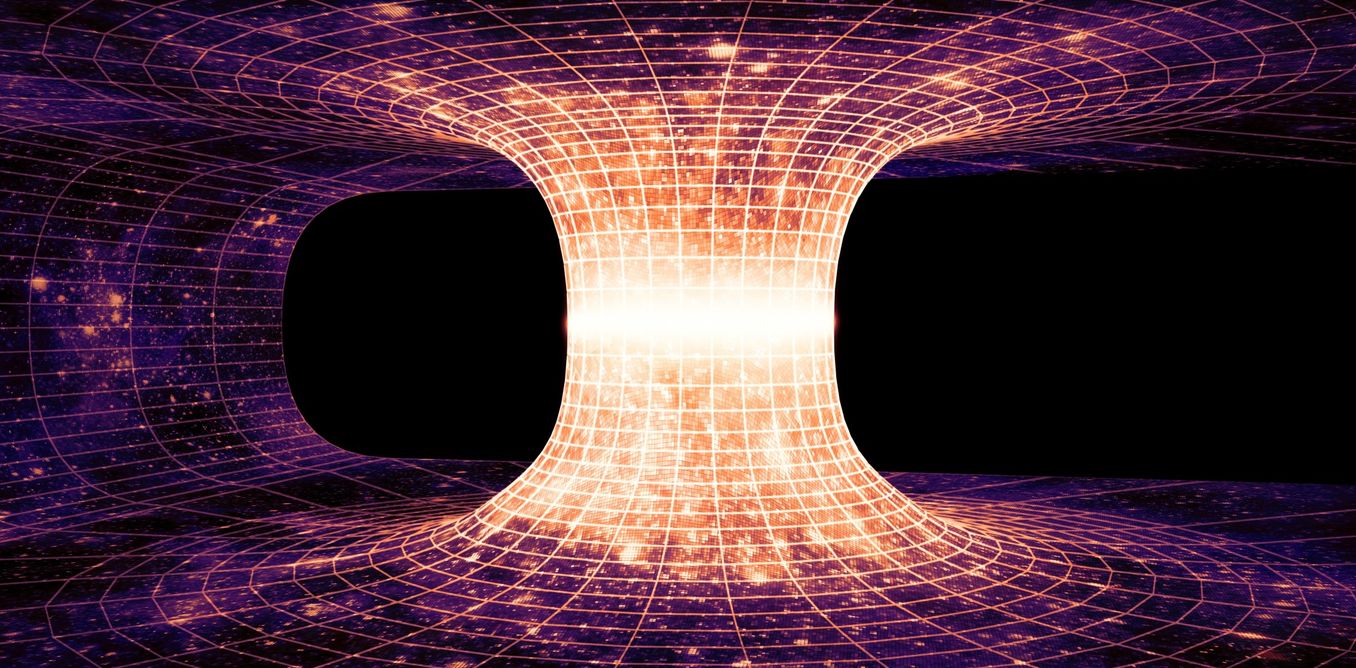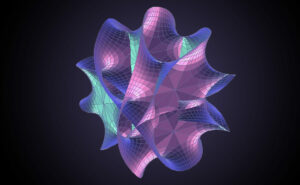In my previous article, we saw how light travels at a 450 angle and any particle with mass will always have at a velocity less than the speed of light. Therefore the events for an ordinary matter with real mass will occur within the region as shown in fig. 1 and there we have our light-cone. One thing to note is that the cone is in two dimensions representing one-dimensional motion.
For a four-dimensional universe like us, it’s difficult to build such a cone, therefore we usually work with a two-dimensional cone. The figure clearly tells us the O to be the present for that particle and A to be the future event of the particle. The cone below O represents the past light-cone and cone above O represents the future light-cone. The dotted line in fig. 2 represents the motion of the particle throughout that event and by definition is called the worldline of that particle.
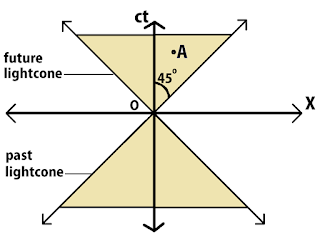
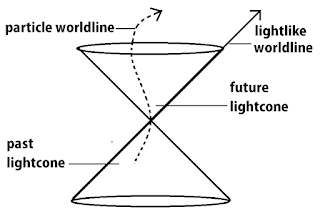
In relativity, observers would not agree about the time required to complete an event, neither do they agree about the distance covered by them. In analogy, from my reference frame, I will be stationary and the car guy is moving and it’s his watch which is ticking slower than mine. On another hand, in car guy’s reference frame, it’s me who is moving and he will observe my clock to be ticking slower than his. Though they don’t agree about time or events, neither of them are wrong (As we saw in ‘Relativity for Beginners’)! Any two observers may not agree about the time interval between the events or space between things at any given moment or about the chronological order of the events.
Someone’s sequence of event in past maybe someone’s sequence of event in the future, therefore, past, present, and future are not a universal division of events, instead, it varies for different observers. Such a statement opens many philosophical questions that, is our future certain? Is reality subjective? However, in fig. 1 we saw that the event ‘caused’ in past light-cone ‘effects’ the future light-cone.
That means an effect cannot occur from a cause that is not in past light-cone of that event and a cause cannot have an effect outside its future light-cone. Therefore, there has to be something which has a universal agreement and which also implies the nature of reality; this is called causality which is the relationship between causes and effects. Every inertial observer will disagree about the present, past, future, time, distance, etc. but they do agree about causality or causal events. Such a causal event to which all inertial observers would agree is the spacetime interval or the spacetime separation between two events. The spacetime interval can be given as: Δs2 = Δx2 – c2Δt2 (which is somewhat like distance formula we saw in part1) the negative sign denotes the forward evolution.
Therefore, causality is ‘reality’ of our universe and thus, the reality is not a three-dimensional space that evolves in time, instead, it’s the four-dimensional non-Euclidean (hyperbolic geometry or basically not flat) mathematical space with no evolution and no time but ‘spacetime’. Its points correspond to events in 4D spacetime and anything which corresponds to geometric relations between that 4D spacetime is real eg. Causal relations, which are nothing but our spacetime interval.
REFERENCE BOOK:
Journey Through the Dark Monster
This book is a primer on general relativity and black holes and has been verified by experts. The chapters are arranged in such a way that they build a strong pictorial and conceptual foundation in the minds of the readers, to help them understand critical aspects of relativity and black holes.
